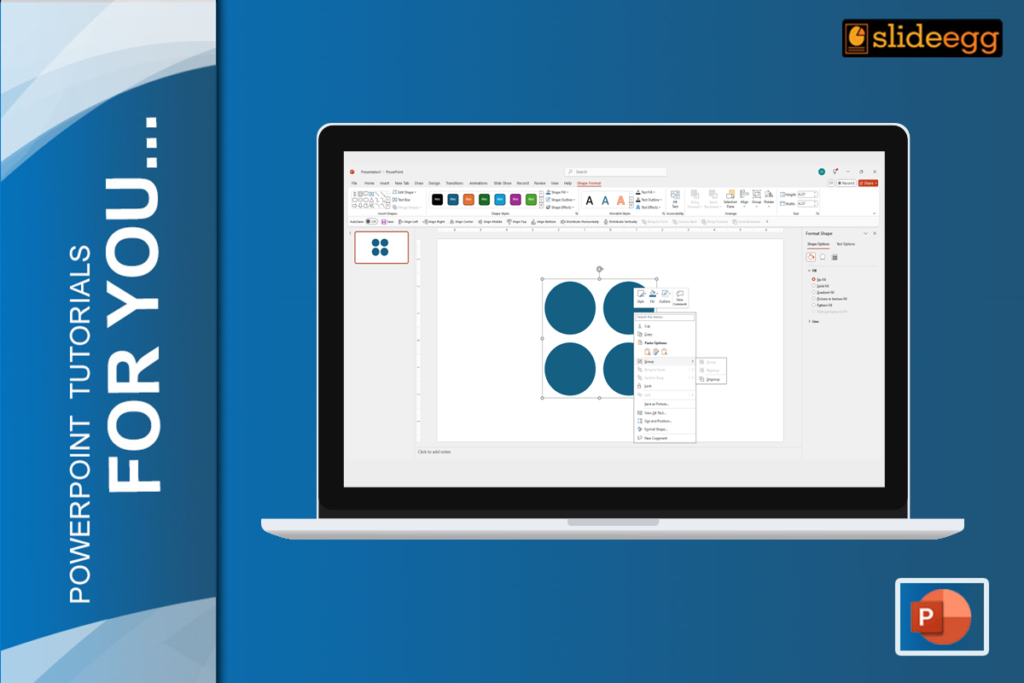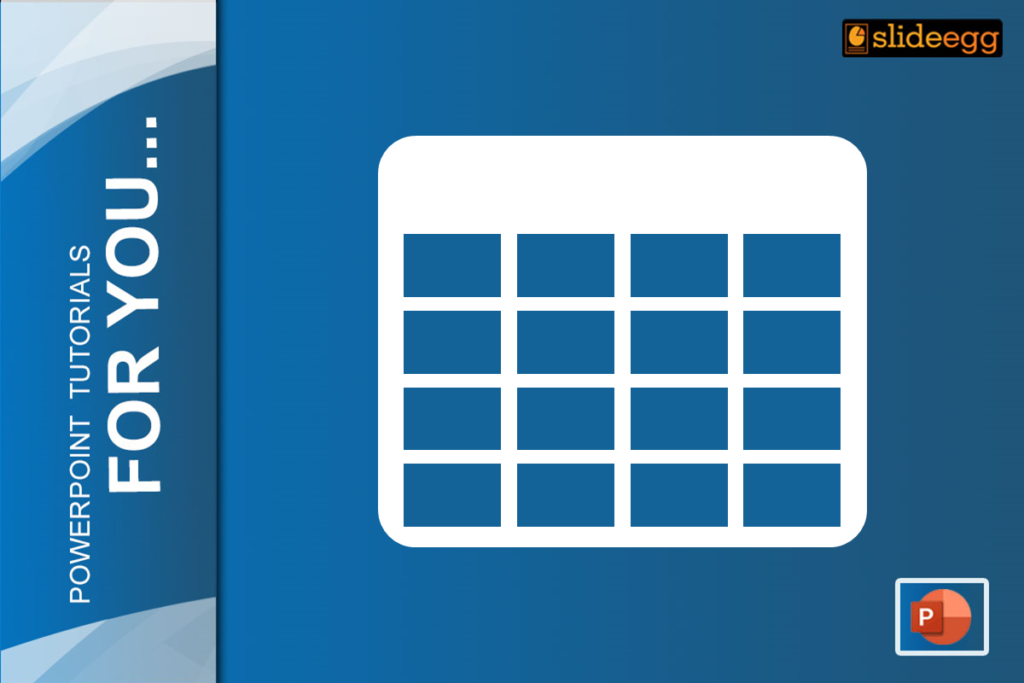A flowchart is a great way to visually represent processes, workflows, or systems. From business plans to troubleshooting guides, a well-designed flowchart can make complex information clear and easy to understand. But how do you create a professional-looking flowchart in PowerPoint? This guide will explain the process in detailed, easy-to-follow steps.
Why Use Flowcharts?
Flowcharts help in:
- Clarifying complex processes
- Improving communication
- Identifying bottlenecks and inefficiencies
- Documenting processes for training or compliance
Steps to Create a Flowchart in PowerPoint
PowerPoint offers two main ways to build your flowchart: SmartArt and Shapes.
- SmartArt: This built-in tool comes with a library of pre-designed flowchart templates. It’s perfect for beginners or those who want a quick and easy solution. You can simply choose a template, customize the text, and you’re good to go!
- Shapes: This method gives you more flexibility in terms of design. You can choose from various shapes like rectangles, diamonds, and arrows, and arrange them to create your own unique flowchart. It requires a bit more effort but allows for a more personalized touch.
Method 1: Creating a Flowchart Using SmartArt
SmartArt in PowerPoint offers a straightforward way to create flowcharts. Here’s how you can do it:
- Open PowerPoint and Select a Slide: Open PowerPoint and select the slide where you want to insert the flowchart. A blank slide works best for an uncluttered look.
- Insert SmartArt: Go to the “Insert” tab on the Ribbon, and click on “SmartArt” in the Illustrations group.
- Choose a Flowchart Layout: In the SmartArt gallery, navigate to “Process” from the left-hand categories. Choose a layout that best fits your needs, such as “Basic Process” or “Vertical Chevron List.”
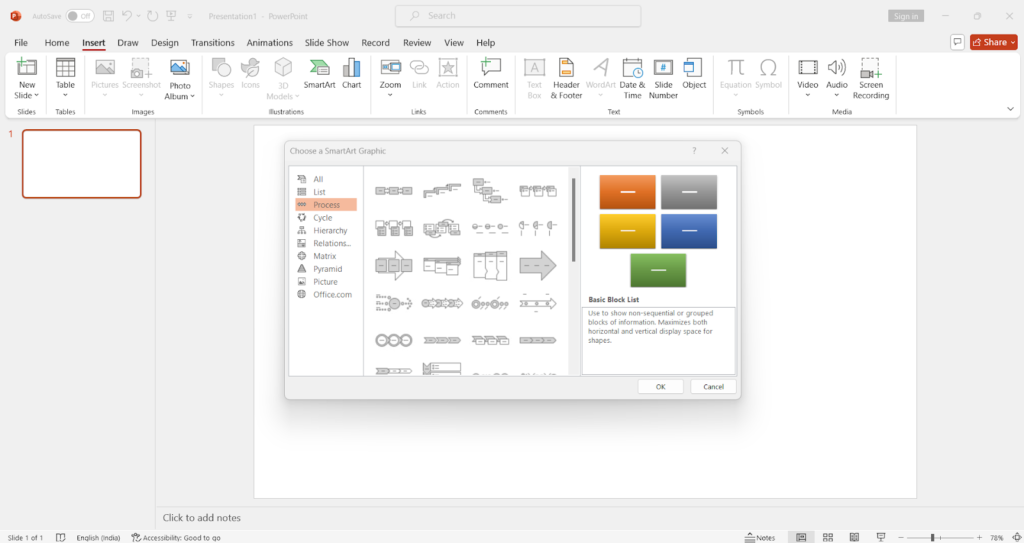
- Add Text: Click on the [Text] placeholders and enter your text. You can add more shapes by pressing “Enter” within the text pane.
![Adding text to SmartArt Flowchart graphic in Microsoft PowerPoint using editable [Text] placeholders.](https://www.slideegg.com/blog/wp-content/uploads/2024/08/MS-PowerPoint-SmartArt-Flowchart-Text-Placeholders-1024x543.png)
- Customize: Customize your flowchart by changing colors, fonts, and styles. Use the “Design” and “Format” tabs that appear when your SmartArt graphic is selected.
Method 2: Creating a Flowchart from Scratch with Shapes
Creating a flowchart from scratch provides more flexibility and allows for more complex designs. Here’s how you can do it:
- Open PowerPoint and Select a Slide: Open PowerPoint and select a blank slide where you want to insert your flowchart.
- Insert Shapes: Go to the “Insert” tab on the Ribbon, and click on “Shapes” in the Illustrations group. You’ll find various shapes under “Flowchart” like Process, Decision, and Data shapes.
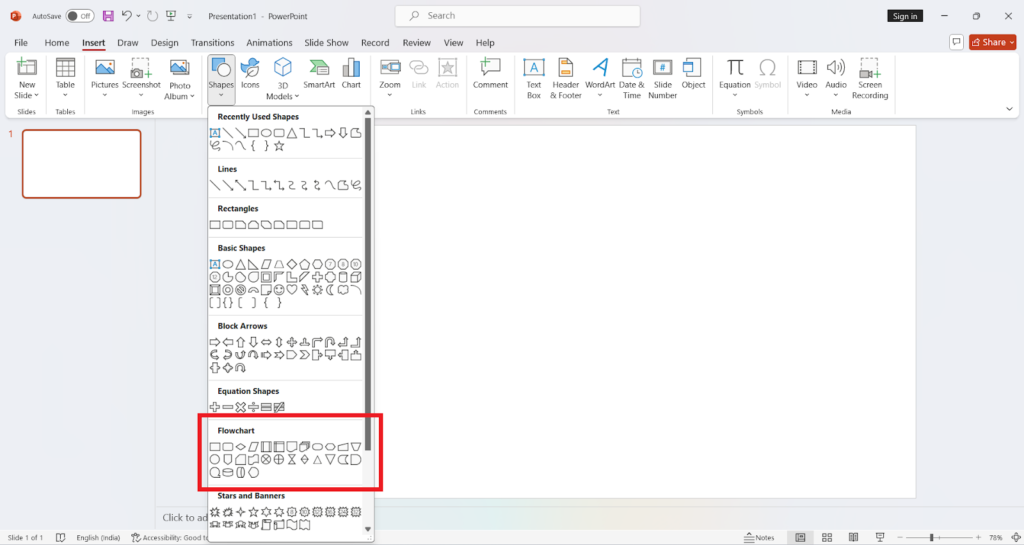
- Draw Shapes: Click on a shape, then click and drag on the slide to draw it. Repeat this step to add all the necessary shapes for your flowchart.
- Add Text: Click inside each shape to add text.
- Connect Shapes: To connect the shapes, go back to “Shapes” and select a connector (such as Arrow or Line). Draw connectors between the shapes to represent the flow of the process.
- Customize: Customize your flowchart by changing the shape styles, colors, and line styles from the “Format” tab.
Save Time with Pre-Designed Templates
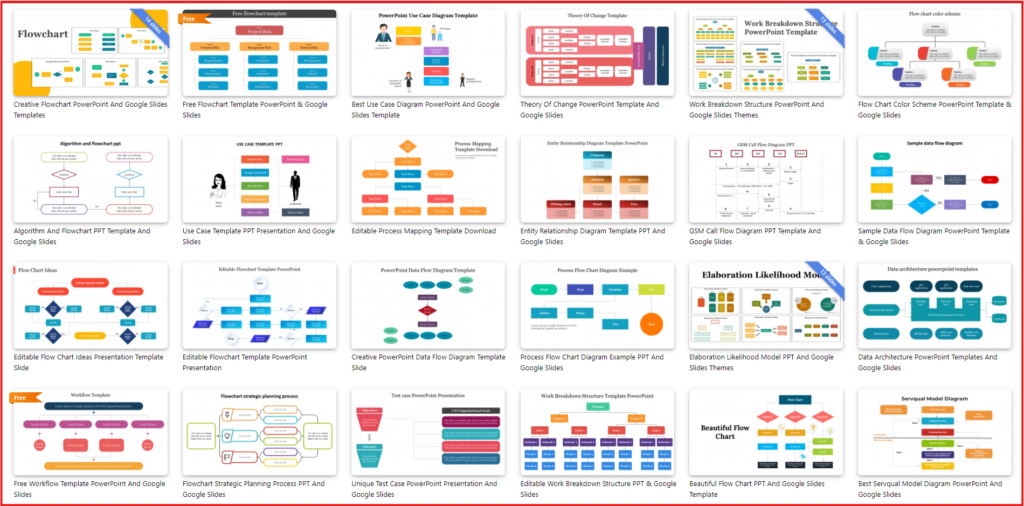
Creating flowcharts manually can be time-consuming, especially for complex processes. Slide Egg offers a collection of pre-designed Flowchart PowerPoint templates that can save you significant time and effort. These templates are professionally designed and fully customizable, ensuring that you can tweak them to fit your specific needs.
Additional Resources
For more hacks on using PowerPoint effectively, be sure to check out the PowerPoint Tips and Tricks page on Slide Egg. This resource is filled with helpful information to enhance your PowerPoint skills, from designing compelling presentations to using advanced features.
Final Thoughts
Creating flowcharts in PowerPoint is a valuable skill that can enhance your presentations and help you convey complex information in a clear, visual way. With the step-by-step methods outlined above, you can be well on your way to creating professional flowcharts with ease.
Whether you choose to use SmartArt or create your flowchart from scratch with shapes, PowerPoint provides the tools you need to create clear and effective flowcharts. Using these methods can help you communicate processes more effectively and improve understanding among your audience. And don’t forget, if you’re looking to save time, Slide Egg’s pre-designed templates are a fantastic resource to get you started quickly. Happy charting!



